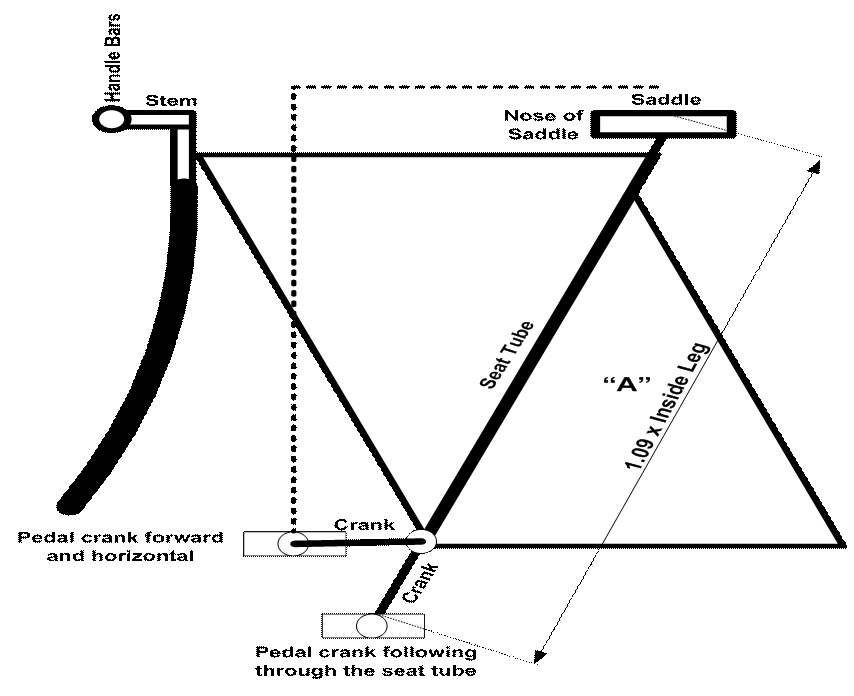Bike Setup
Setting up the Bike to fit you
Note:- this process applies to any standard bike: ie MTB, Road, Hybrid or Time Trial.
- Find available floor space where the ground is level.
- Use a spirit level on top of a straight edge and adjust the saddle until it is level.
- Measure your inside leg; Hook the tape measure over a straight edge, place between legs and measure to the floor; bare feet (straight legs) to the crotch without applying too much pressure.
- Multiply the inside leg measurement by 1.09 and note the result.
- Place a straight edge across the saddle and measure from the underside of the straight edge (top of saddle) to the top of the centre axel of the peddle when the crank follows through the seat tube and adjust the height of the saddle to the result in 4 above. See diag measurement “A”.
- Sit on saddle and peddle backwards until you feel comfortable (1min) then stop when one of the peddles is horizontal and forward. Hang a plumb line from the knobbly bit of the knee (the bit at the front just below the kneecap where you can pinch the indents between your fingers). Put the string of the plumb line under your finger in the knobbly bit and when it stops swinging note the distance between the plumb line and the centre axel of the pedal. If the line is forward of the centre axel of the pedal move the seat back by the same distance. If behind the centre axel move the seat forward by that distance.
- Repeat steps 1 to 6 to check that everything is correct.
- Put your elbow against the nose of the saddle and with fingers outstretched, the distance to the handlebars should be between 0 to 2 inches. Change the stem to one of the correct length if necessary.
- The height of the handlebar stem should be set to where you are seated most comfortably. Ideally for Time Trials (aerodynamic efficiency) the height should be set so that the back is flat (parallel to the ground). Adjustments should be made gradually until the correct height is achieved.
